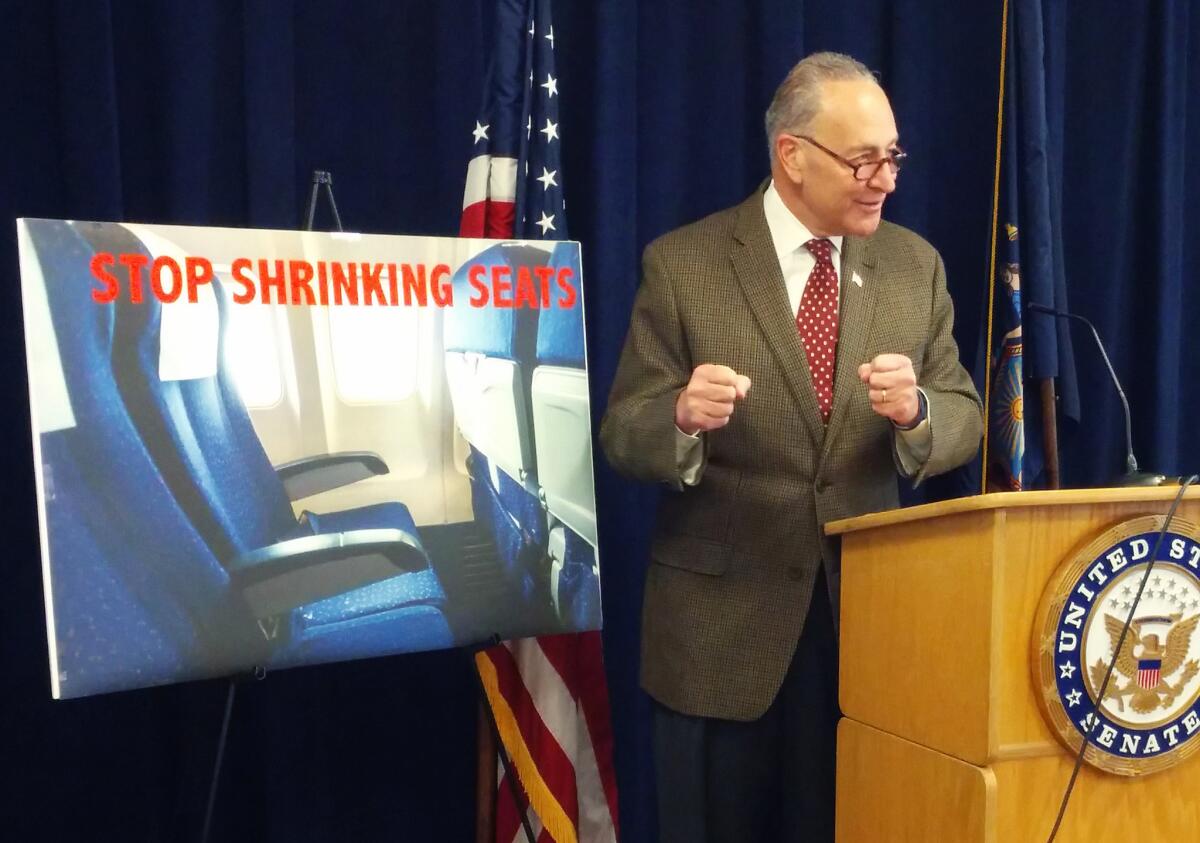Lawmaker calls for minimum size standards for airline seats

Sen. Charles E. Schumer (D-N.Y.) talks at a news conference about wanting to require the Federal Aviation Administration to establish seat-size standards for commercial airlines.
For the second time in as many months, a federal lawmaker has pushed for minimum seat size standards on commercial planes to combat the airline industry’s efforts to shrink leg and hip room on U.S. flights.
Sen. Charles E. Schumer (D-N.Y.) is the latest lawmaker to introduce an amendment to a Federal Aviation Administration funding bill, calling for the FAA to adopt minimum seat sizes. Rep. Janice Hahn (D-Los Angeles) and Rep. Steve Cohen (D-Tenn.) offered up a similar amendment in January but it was rejected in a subcommittee.
See the most-read stories this hour >>
Schumer says the average legroom on airline seats has shrunk from about 35 inches in the 1970s to nearly 31 inches today, with seat width narrowing from 18.5 inches in the 1990s to about 17 inches.
The federal government doesn’t impose a minimum seat size. Instead federal law allows airlines to squeeze as many seats in a cabin as the companies want as long as the passengers have enough room to escape the cabin in an emergency within 90 seconds.
The airline industry, as expected, opposes any seat standard, saying the FAA already imposes requirements based on safety and that market forces determine how much legroom passengers want to pay for.
“As with any commercial product or service, customers vote every day with their wallet,” said Vaughn Jennings, a spokesman for Airlines for America, the trade group for the nation’s biggest carriers.
There are a few drawbacks to Schumer’s proposal, including the likelihood that if the FAA adopts new standards, the federal agency would give airlines several years to install the roomier seats, according to industry experts.
Also, if airlines were required to reduce the seat totals in each cabin to allow more legroom, airlines would most likely raise ticket prices to make up for the loss of total passengers per plane.
“If there are fewer seats on the plane, the prices are going to be higher,” said Seth Kaplan, managing partner of the trade publication Airline Weekly. “In the end, you are going to get some resistance not only from airlines but from some consumer groups.”
To read more about travel, tourism and the airline industry, follow me on Twitter at @hugomartin.
ALSO
ANA becomes the airline for ‘Star Wars’ buffs
Boeing invents a self-cleaning airline lavatory
Beverly Center to undergo $500-million renovation that will add upscale food and sunlight
More to Read
Inside the business of entertainment
The Wide Shot brings you news, analysis and insights on everything from streaming wars to production — and what it all means for the future.
You may occasionally receive promotional content from the Los Angeles Times.











